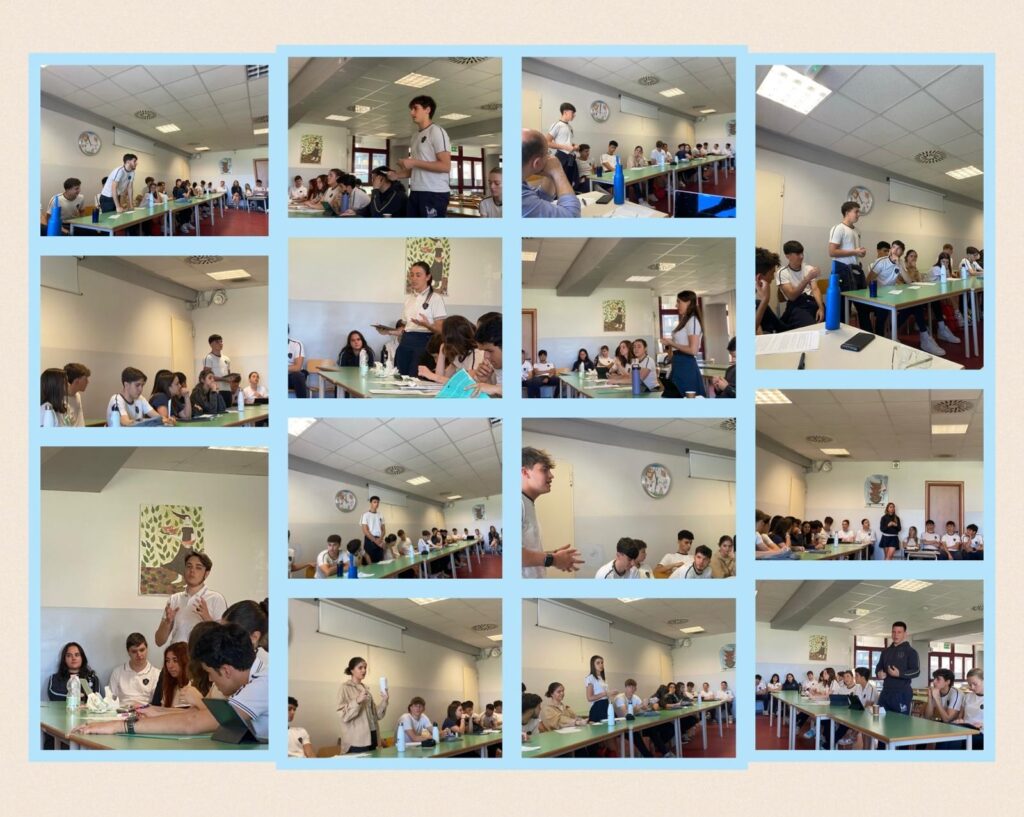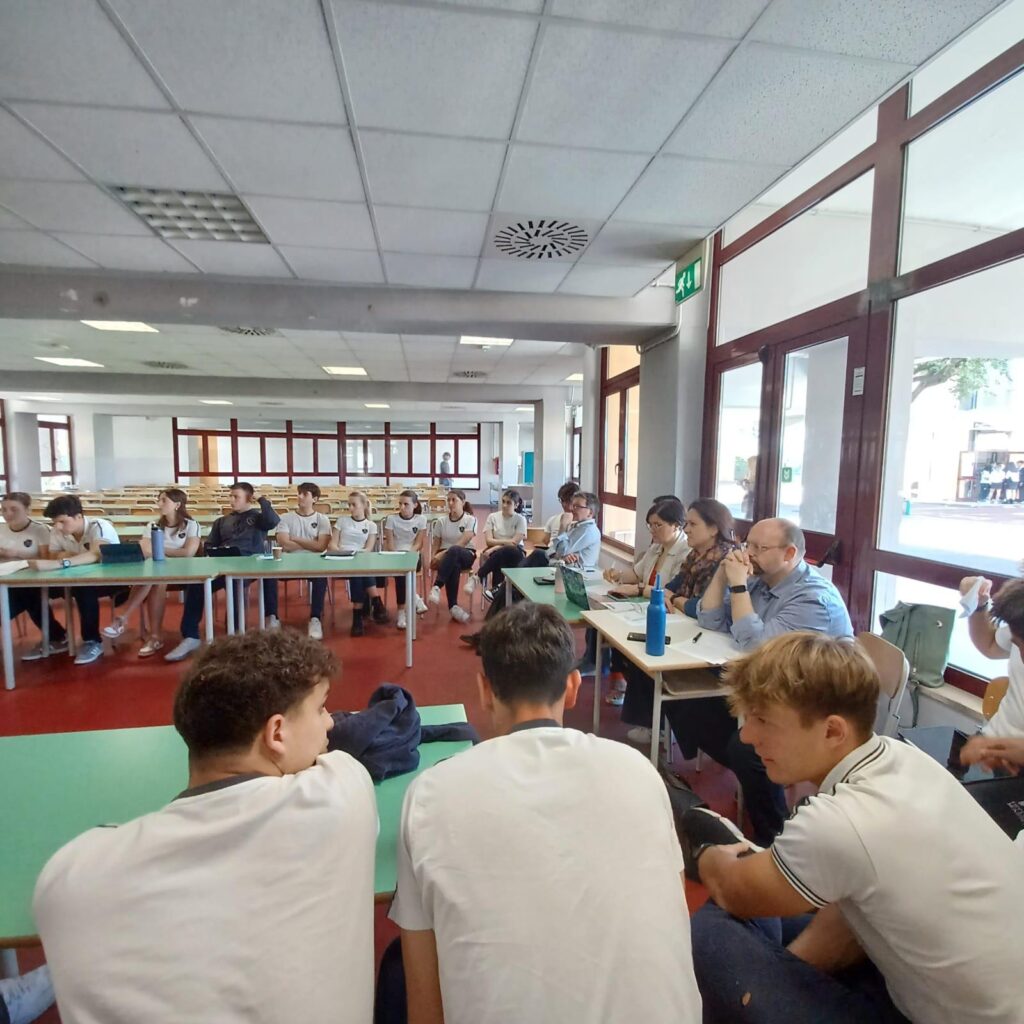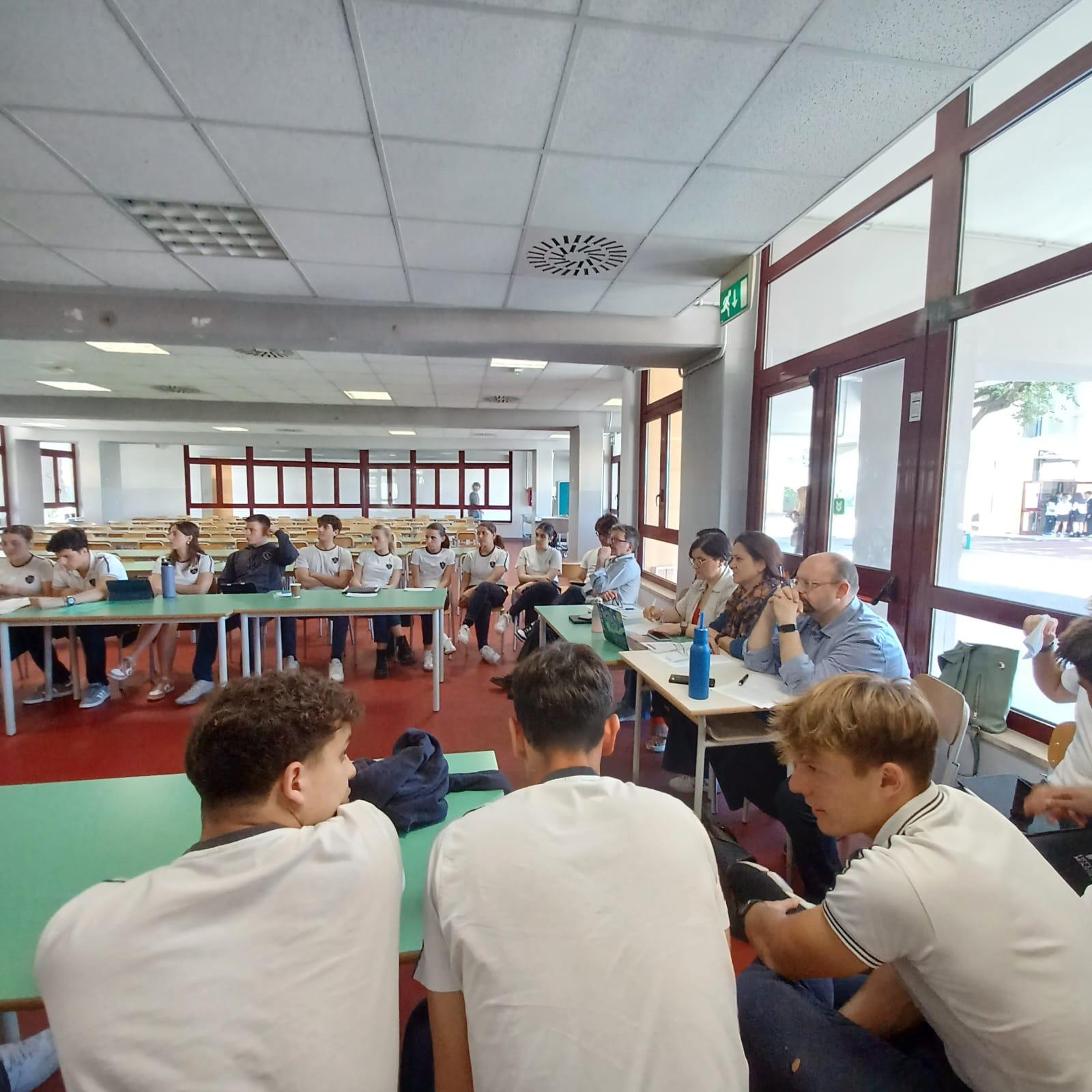PANEL DISCUSSION
“Conditioned Procreation: law, ethics and science in the decision-making process”
Embryo and Law
Embryo and Ethics
Embryo and Science (MAP techniques)
In the perspective of the Global Citizenship Education, during the years of the pandemic, we have had plenty of time to ponder and create interesting and stimulating projects for our students. One, in particular, has been conceived for 18/19-year-old youngsters, attending the last year of high school, ready to sit their State Exam.
The project involves three subjects, Religious/Social Studies, Biology, English Literature, and the main topic is linked to the urgent crucial issue of conditioned procreation.
Which are the latest scientific discoveries? Which laws and ethical doubts arousing when facing such a question?
We asked our students to debate in English five case studies taken from real life, in order to share opinions, knowledge and experiences.
If you asked me how it all began, I would say it was by chance. My colleagues and I, all teaching English literature, were talking about Huxley and his “Brave New World”, a dystopian novel in which babies are created in labs and conditioned to become what has been planned by the rulers of this weird society. A pretty actual question, if we are to consider the number of people recurring to MAP technologies in order to have a baby, either for physiological problems or for physical obstacles.
As our state exam requires students to create cross-curricular bonds between topics, starting from a tip chosen for each candidate by the examination board, we reckoned it might be interesting to imagine a project based on a holistic approach to such crucial issues that today we would define GLOCAL: bioethics and eugenics.
The first step was to identify the subjects to include in the plan, so we chose Religious/Social Studies, to reflect about the ethic side of the question including euthanasia and abortion, and Biology, to illustrate the scientific aspect of the ART (Assisted Reproductive Technology), explaining its functioning, operating modes and accepted conditions to apply for it.
The teachers of English literature, in their turn, introduced and then analyzed the life and work of Huxley, asking the students to read “Brave New World”, then explaining all the implications useful for the project.
Final act: the panel discussion. The three classes of students involved in the whole activity were invited to analyze five real case studies. Three students, one per class, introduced the general question from a legal, ethical and scientific perspective, while the other three were chosen as moderators.
The teachers who treated the topic constituted the board and were responsible for assessing the performance of the participants, based on these three indicators: technical language (multi-lingual competence), specific contents (methodologic competence) and cross-curricular research and connections (personal and social competence, “learning to learn” ability, competence in cultural awareness and expression).
Here are the case studies:
1.
You are the principal of a Jesuit School in a western country and you are facing new challenges relating to the new family models.
A female couple, not married, is asking you for their son, Mark, application for secondary school.
Mark attended primary school in a Catholic institution led by nuns. They applied for this primary school because Mark’s aunt is the mother superior of the school.
During the primary school Mark has been discriminated because he has not got a father, as his schoolmates said, and he cannot be a good catholic.
Everyday Mark came back home blaming on them, arguing that it could have been better for himself not living. So, they came to your school because they are looking for a place where Mark can feel welcome and not discriminated.
There are good reasons to accept Mark’s application relating to student right for a proper education, no matter of culture, religion, sex and moral conviction.
There are good reasons to not accept Mark’s application relating to the real context of your school, as you know it, and your warning about what Mark will face in your school.
2.
In Italy, a homosexual couple cannot have access to MAP. In many other countries of the world, however, this is permitted. Many Italian homosexual couples, therefore, see themselves abroad, have a child and then return to Italy, where only the parent who is biologically related to the child will be recognized as such, while the other will not. Even if the biological parent were to die, the non-biological one would have to go through lengthy trials to obtain custody of the child.
Do you think it is fair that in Italy homosexual couples cannot have access to the techniques?
Do you think that once they have the child abroad, both parents should be recognized as the parents of the born child?
3.
Does an embryo have the same rights of a person?
According to Law n. 40, embryos that had not been implanted into a woman’s uterus cannot be eliminated and must be cryopreserved, since they are considered potential people.
4.
March 2004: A and B are asymptomatic carriers of the Beta thalassemia gene (rare genetic disease that leads to a defective production of hemoglobin). To avoid the transmission of the gene to their future son, they go to a specialized center to have access to MAP. After the fertilization, they want to implant only the healthy embryos. The law does not allow them to select the healthy embryos (art. 4, 14 c.2 law 40), but only to contrast sterility. They address Catania’s court, but it rejects their request, applying law 40.
5.
A (female) and B (male) are married, but they failed to have a baby. They go to a specialized center for accessing MAP. After using FIVET (Fertilization In Vitro Embryo Transfer) to fertilize the oocytes, the obtained embryos are conserved in the center for in-vitro culture. During this period, A and B formally divorce. A decides to continue the therapy, accessing to embryo transfer. However, B does not agree with A’s choice, especially because his gametes were used for the fertilization. B addresses Rome’s court to avoid the embryo transfer. The court rejects his motion due to the law 40/2004
—————–
After introducing the techniques, the laws and the documents produced also by the Congregation for the Doctrine of the Faith, all the teenagers had the opportunity to freely share their opinions and doubts, also triggering a discussion about “tailor-made children”.
The following questions and statements represent the outcome of the debate.
- Isn’t it paradoxical for a catholic school not to accept Mark, thinking that other students can discriminate him? It would mean the catholic school hosts families that are not true catholic.
But, at the same time, from another perspective, someone argued that, being aware of the type of school, why did the family insist on choosing it?
- The society is evolving and new concepts of family are arousing, anyway what matters is providing love, financial and social stability, regardless of the parents’ sex.
- What is better to do with extra-embryos cryo-conserved? Throw them away or use them for scientific research? Anyway, the latter could lead not only to the cure for some diseases, but to dangerous experiments of cloning, as well. Are we going to have a new “human” version of the sheep Dolly?
- Are embryos potential people or only a cluster of cells? Do they have rights? And … what about fathers’ rights on embryos?
- When does an embryo become a person? In the Bible is written that “God knew us before our birth”, answered a student. But the embryo is not self-sufficient, said another, it is not a living being!
- About the selection of healthy embryos: why is it forbidden while, on the other hand, a woman who became pregnant naturally can decide to undergo amniocentesis and, subsequently, choose abortion if the fetus is not healthy? The discussion headed towards one of the issues of our society linked to consumerism and greed: the “throwaway culture”, according to which we dismiss what is not useful, whether it be an object or a human being.
It has been exciting and intriguing observing students during the debate: they were deeply involved in the issues that they addressed with competence and seriousness. They proved to be capable of critical thinking and open-mindedness.
We must be proud of them: skilled glocal citizens are ready to face new future challenges!
Prof.ssa Caterina Lizzio
Responsible for Global Citizenship Education at Istituto Massimo







